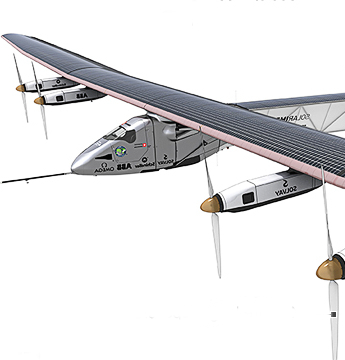Solar plane touches down, much more to come
 The world’s first inter-continental solar-powered plane has completed the first leg of its round-the-world journey.
The world’s first inter-continental solar-powered plane has completed the first leg of its round-the-world journey.
The aircraft – Solar Impulse-2 – has taken off from Abu Dhabi and landed in Oman.
The 12-hour trip is the first step of a five-month journey across the continents, and both the Pacific and Atlantic oceans.
The plane will stop off at various locations around the globe to rest, repair and restock.
It will also bring a message about the importance of clean technologies to the world.
The Solar Impulse project has a wingspan of 72 metres, which is wider than a 747 jumbo jet, but it weighs a miniscule 2.3 tonnes.
17,000 solar cells line the top of the wings, and energy-dense lithium-ion batteries can sustain it for night-time flying.
The two pilots will be crammed into cockpit measuring just 3.8 cubic metres in volume.
One of their biggest risks ahead is the attempt to cross the Pacific and the Atlantic.
The relatively slow speed of the prop-driven plane means the pilots will have to fly non-stop several days and nights of non-stop flying to complete.
Both have trained on flight simulators, and intend to use techniques such as yoga and self-hypnosis to stay fresh and focused.
The pilots are Andre Borschberg and Bertrand Piccard.
Borschberg is a trained engineer and former air-force pilot, who built his fortune in internet technologies.
Piccard was one half of a team that completed the first non-stop, circumnavigation of the world in 1999, son of a record-holding deep-sea diver and grandson of Auguste Piccard, who in 1931 became the first person to take a balloon into the stratosphere.
A video of the landing can be seen below:







 Print
Print